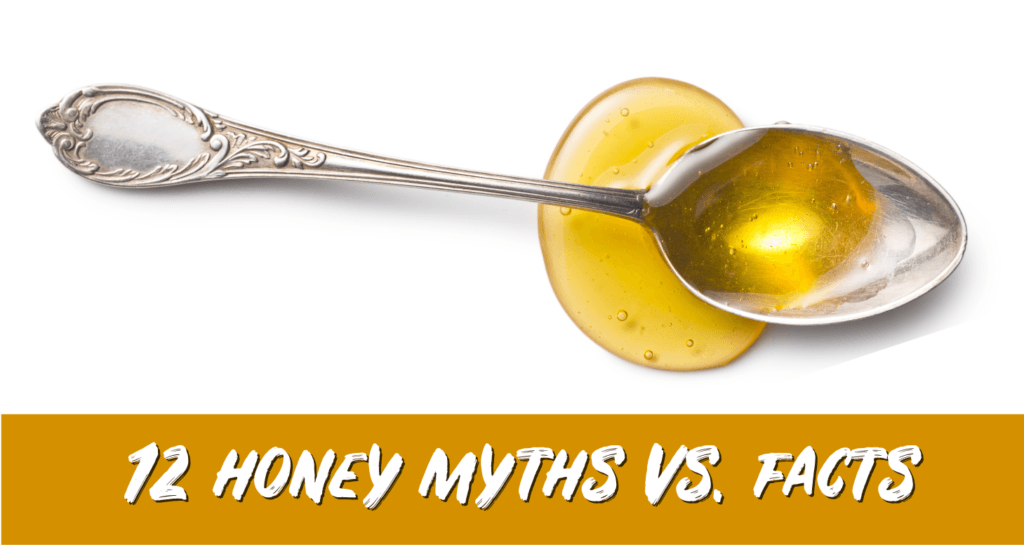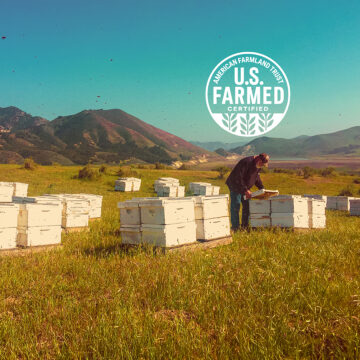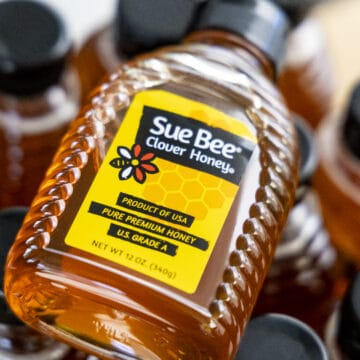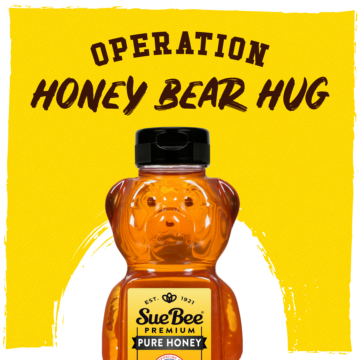12 Honey Myths vs. Facts
Fact or fiction – are you curious about which is which when it comes to honey? We’re here to unmask the 12 biggest honey myths and explain the facts.

1. Crystallized honey is spoiled honey
Myth
There’s a lot of misconception when it comes to crystallization, also known as granulation. Crystallization is honey’s natural process of preserving itself. The main reason for this phenomenon is honey’s composition. Typically, honey contains natural sugars and around 20% water. Because this is saturated, the glucose may separate from the water and form crystals. However, the honey is largely unchanged and remains just as tasty.
If your honey is crystallized, follow our three simple steps for decrystallizing your prized sweet.
2. Honey is a great alternative to artificial sweeteners and table sugar
Fact
Honey contains nutrients such as vitamins and minerals that artificial sugars don’t have. And because honey is sweeter than table sugar, you can use less to achieve the same effect.
See exactly how honey and sugar compare in our sweetener showdown.
3. Darker honey or white “foam” means the honey has gone bad
Myth
Honey comes in all colors and flavors. The color, taste and even scent can vary widely depending on the source of the flower nectar, region, soil and climate. Warmer temperatures, storage and age also tend to darken the honey and change the flavor.
The white “foam” that appears at the top of honey is simply air. This “foam” is a result of tiny air bubbles in the honey escaping to the top of the bottle. So next time you see this, don’t throw out your honey!
4. Honey can be used for skin care
Fact
Honey can be a great ingredient in homemade skin care products. In fact, here are six homemade skin products made with honey you can whip up.
5. Honey is gluten free
Fact
Honey is naturally free of gluten. It contains no wheat, barley, rye or oats or their byproducts. No gluten-containing products are stored or used in Sue Bee® honey facilities.
6. It’s dangerous to use metal spoons with honey
Myth
This is an old wives’ tale that won’t go away. While honey is acidic, scooping your honey with a metal spoon is such a quick movement that corrosion of the metal is unlikely. However, we do not recommend storing a metal spoon within your honey for long periods of time.
7. Honey can be used on wounds
Fact
Up until the early 20th century, honey was used as a conventional therapy in fighting infection.
8. All bees produce honey
Myth
There are nearly 20,000 known bee species in the world. From this number, only 5% make edible honey. Only honeybees and stingless bees produce enough honey to make harvesting worth it. Bumblebees produce a small amount of honey for their own survival.
9. Honey is the only food source produced by an insect that humans eat
Fact
Out of the more than 950,000 known insect species in the world, honeybees are the only insect to produce edible food for humans.
10. Honey can help soothe a sore throat
Fact
The next time your throat is aching, grab your honey bottle. Honey has been known to help aide the symptoms of sore throats. A recent study by a Penn State College of Medicine team also found that honey may offer parents an effective and safe alternative to other cough suppressants.
If your throat is starting to feel scratchy, try these four cough drops made with honey.
11. Honey is a great source of natural energy
Fact
Honey’s composition of carbohydrates and glucose levels can help provide longer-lasting energy. Carbohydrates are the primary fuel we use for our energy and are necessary in our diet to help maintain muscle glycogen. If you’re looking for long-lasting energy, check out these 14 energy bites with honey.
12. Honey never goes bad
Fact
We repeatedly state that honey never spoils. However, honey can lose its aroma and flavor if it’s not stored properly. Because of honey’s composition, it absorbs moisture like a sponge. Properly preserved honey retains its quality for much longer than the “best by date” printed on bottles. So save your honey and discover the best practices for storing your favorite sweetener.
Did we miss any myths you wanted to demystify? If so, share them with us on Facebook or Twitter!



